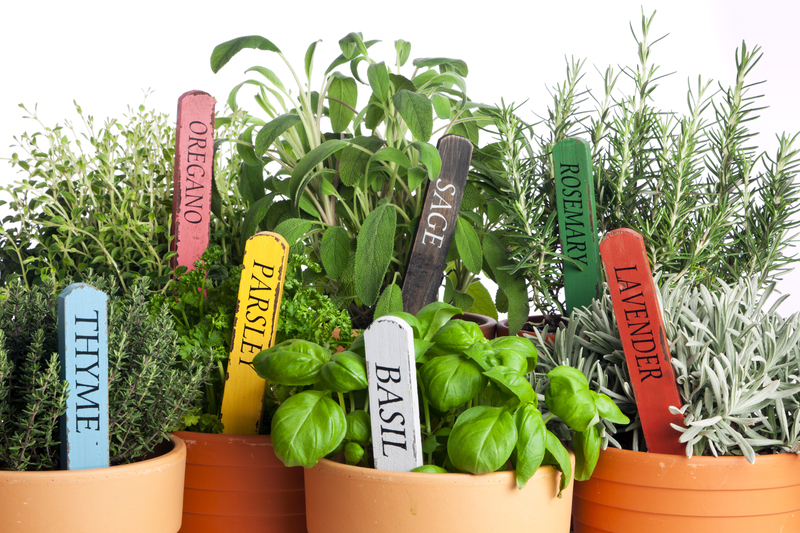Preparing Your Garden for Winter: Protecting Your Plants
Posted on 23/06/2025
As autumn's vibrant colors give way to winter's gray chills, passionate gardeners know that the gardening year isn't over--it's just entering a new phase. Preparing your garden for winter is essential to ensure the wellbeing of your plants during colder months and to set the stage for a lush, healthy garden next spring. In this comprehensive guide, we'll walk you through effective strategies and expert tips for protecting your plants in winter, from hardy shrubs to delicate perennials, fruit trees, and even container gardens.
Why Winter Preparation Is Crucial for Gardens
Winter can be harsh on gardens. Freezing temperatures, frost, snow, and chilling winds can cause severe stress and damage, especially to young or tender plants. Taking proactive measures in the fall is crucial, as it:
- Prevents plant loss due to frost or snow damage
- Reduces pest and disease issues in spring
- Promotes stronger, healthier regrowth when temperatures rise
- Keeps your garden neat and attractive during the dormant season
Whether you maintain a flower garden, vegetable plot, or an ornamental landscape, winter garden care increases your garden's resilience and beauty year-round.

Understanding Your Local Climate
Before diving into your winter prep tasks, familiarize yourself with your USDA Hardiness Zone or local climate conditions. Plants that survive winters in southern regions may need special attention in areas prone to deep freezes and snow. Visit the USDA Hardiness Zone map or consult your local gardening center to identify your exact zone.
- Note frost dates: Keep track of the average first and last frost dates in your area.
- Know temperature extremes: Some regions have mild winters with occasional cold snaps; others have extended icy periods.
Clean Up the Garden Beds
A clean and tidy garden discourages overwintering pests and diseases. Follow these steps for effective garden bed preparation:
Remove Dead or Diseased Plant Material
- Pull up annuals that have finished their life cycle. Compost healthy debris, but dispose of diseased plants to prevent spread.
- Trim faded perennials, cutting back dead stems and leaves. However, leave stems with seed heads for winter interest and wildlife food.
- Rake fallen leaves: Remove thick layers of fallen leaves from lawns and beds to prevent smothering plants.
Weed Thoroughly
- Eliminate weeds now, since many will go dormant and resurge in spring.
Protecting Your Plants from Freezing Temperatures
Cold temperatures pose the greatest threat to most plants. Here's how to protect your garden plants in winter from frostbite and freeze damage:
Mulching: The Winter Blanket
- Spread 2-4 inches of organic mulch such as shredded bark, straw, or compost around perennials, shrubs, and vegetable beds. Mulch insulates the soil, stabilizes temperature, and keeps roots from freeze-thaw cycles.
- Leave a gap around stems--avoid piling mulch directly against plant stems to prevent rot.
Watering Before Freeze
- Thoroughly water the garden before the ground freezes; moist soil retains heat better than dry soil.
Covering Vulnerable Plants
- Use frost cloths, burlap, or old sheets to cover tender plants during cold snaps.
- Create temporary shelters by building frames covered with plastic or fabric to shield sensitive plants.
Protecting Container Plants
- Move pots indoors or to a sheltered area (garage, shed, or near house walls).
- Wrap pots with insulating material (bubble wrap, hessian, or blankets) to keep soil from freezing.
Winter Care for Specific Plant Types
Perennials
- Cut back faded foliage after a hard frost, but consider leaving some stems for beneficial insects and birds.
- Divide crowded clumps of perennials in the early fall or late winter to encourage stronger spring growth.
Shrubs and Trees
- Water deeply before the ground freezes, especially for new plantings.
- Wrap trunks of young or thin-barked trees (like maples or fruit trees) with tree wrap to prevent sunscald and animal damage.
- Mulch the root zone liberally, keeping mulch a few inches from the trunk.
Roses
- Stop fertilizing and pruning at least six weeks before the first frost. Allow plants to harden off naturally.
- Mound soil or mulch around the base of rose bushes after the first hard frost--up to 12 inches for hybrid teas and similar varieties.
- Cover with rose cones or burlap screens if winters are severe.
Bulbs
- Dig up tender summer bulbs (e.g., dahlias, gladiolus) after foliage dies back; store in a cool, dry place.
- Plant spring-flowering bulbs (e.g., tulips, daffodils) before the ground freezes for a burst of color come spring.
Vegetable Gardens
- Harvest remaining crops and remove plant debris.
- Sow cover crops (green manure) like winter rye or clover to enrich the soil, reduce erosion, and suppress weeds.
- Add a layer of compost or mulch to empty beds to protect the soil from winter weather.
Pest and Disease Prevention
Winter garden preparation is incomplete without considering pests and diseases:
- Dispose of all diseased plants--do not compost infected material, as pathogens can survive until spring.
- Clean garden tools with a disinfectant to prevent the spread of disease.
- Set up rodent guards around tree trunks to deter voles, rabbits, and other gnawing pests.
Protecting Your Garden Structures and Hardscape
Don't forget non-living elements of your garden:
- Drain and store hoses to prevent cracking from freeze damage.
- Shut off outdoor faucets and irrigation systems to avoid burst pipes.
- Clean and oil tools to prevent rust and damage.
- Repair or secure fences, trellises, and raised beds for snow and wind resilience.
Wildlife in the Winter Garden
Your winter garden can be a sanctuary for birds and beneficial insects. Here's how to support them:
- Leave seed heads on some perennials (e.g., echinacea, rudbeckia) for birds to eat.
- Provide fresh water in a birdbath or shallow dish; use a heater to prevent freezing in colder climates.
- Create brush piles with pruned branches to shelter overwintering wildlife.
Winterizing Lawns
Lawns, too, benefit from late-season care:
- Mow one last time before the grass stops growing; leave it slightly longer (around 2.5-3 inches) for winter.
- Aerate compacted areas to improve water and nutrient uptake.
- Apply fall fertilizer high in potassium to encourage root health.
- Rake up leaves or mulch them into the lawn to prevent matting and disease.
Planning Ahead: Next Spring's Rewards
Proper winter preparation for your garden is not just about survival--it's about setting the stage for next year's success. While your plants rest, use the winter months to:
- Review this season's successes and challenges.
- Plan new plantings, garden layouts, or landscape improvements.
- Order seeds and supplies early, prepping for spring planting.
- Clean, sharpen, and organize garden tools.

Frequently Asked Questions on Preparing Gardens for Winter
Do all plants need to be covered for winter?
Not all plants require covering. Focus on tender annuals, delicate perennials, and recent plantings. Most established, cold-hardy varieties tolerate winter without extra protection; however, mulching is beneficial for almost every plant type.
Is it okay to prune trees and shrubs in late fall?
It's best to avoid heavy pruning in late fall, as this can stimulate new growth that's vulnerable to winter injury. Prune only damaged or diseased branches and save major pruning for late winter or early spring.
How can I protect raised beds or vegetable gardens in winter?
Cover crops, mulch, and row covers offer excellent winter protection for raised beds and vegetable plots. Remove all spent crops and debris to minimize pests and diseases populating during winter.
When should I start preparing my garden for winter?
Begin garden winterization in early autumn, before the first hard frost arrives. This gives you ample time to tackle all tasks without rushing.
Conclusion: Nurture Your Garden, Reap the Rewards
Preparing your garden for winter and protecting your plants is a labor of care and foresight. A little extra effort in the fall pays rich dividends in the health, beauty, and productivity of your garden come spring. By cleaning up beds, mulching, watering, covering vulnerable specimens, and supporting wildlife, you'll create a resilient landscape that weathers the cold gracefully. Embrace this important gardening ritual and look forward to vibrant growth and vivid blooms when the world awakens once more.
Happy gardening--even in winter!


